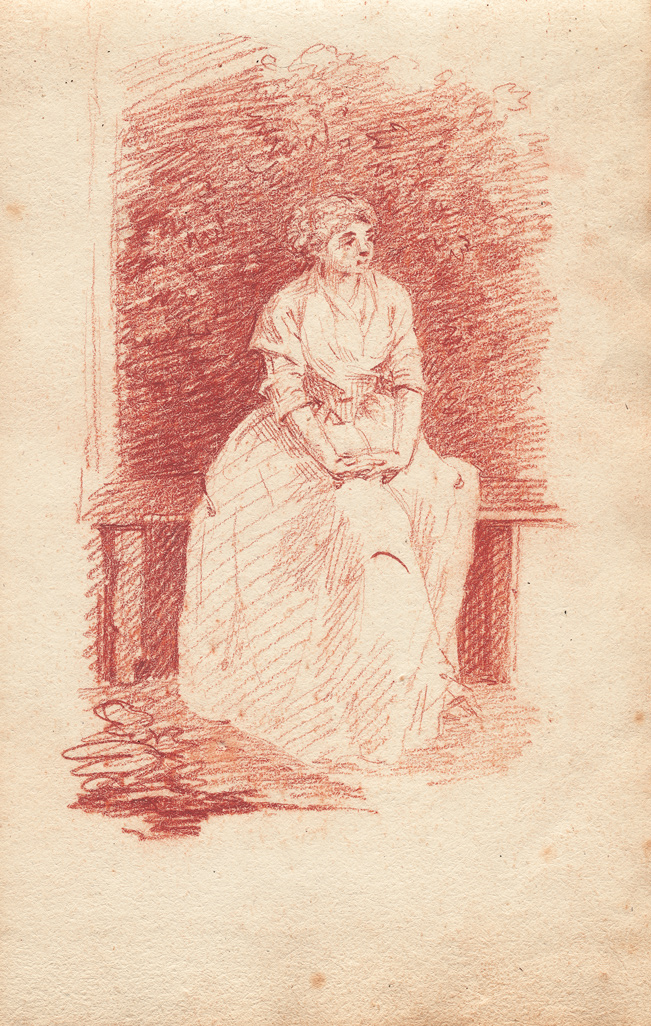Loading the page ...
Johann Wilhelm Meil
(1733 Altenburg – 1805 Berlin)
Sketchbook in horizontal quarto format with studies of figures, animals, trees, genre scenes, and preparatory studies for illustrations. Forty-eight drawings in black and red chalk, heightened with white, and one drawing in pen and point of brush on white, grayish-green, or pink paper, many executed on both the recto and verso of the sheets. 12.5 x 19.6 cm.
Primarily self-trained, the draftsman, illustrator, and etcher Johann Wilhelm Meil came from a family of Thuringian artists, and moved to Berlin in 1752 during the height of the Friederican Rococo. There Meil met the renowned sculptors Johann Christian Hoppenhaupt and his brother Johann Michael the Elder, for whom he made etchings after their designs for the applied arts. Soon thereafter, Meil produced etchings after his own inventions. Among his most important works are the drawings for the twelve vases on the front terrace of the picture gallery of Sanssoucci in Potsdam, that were executed by local sculptors. Multi-talented, Meil also worked as a costume designer for the Berlin Hoftheater (court theater) and was, as Nagler describes, “an artist equally learned as with taste, friendly to be with and full of humor.” Meil’s greatest skill, though, was in the field of book illustration. He took great interest in literature, and in 1756 became a member of the Berlin Montagsclub (Monday Club). Its members included such leading Enlightenment figures as Friedrich Nicolai, Gotthold Ephraim Lessing, and Moses Mendelsohn. Meil etched title pages, vignettes, and illustrations for works by Lessing, J. G. Sulzer, Goethe, Wieland, and other prominent authors of his time, images rendered in a delicate, light style inspired by the French Rococo. Under the influence of his slightly older contemporary Daniel Chodowiecki, Meil’s later work evolved to become simpler and less florid, achieving a less stylized representation of people and nature. Meil became a member of the Berlin Academy in 1766, assuming higher positions within the institution in ensuing years and succeeding Chodowiecki as the director in 1801.
The present sketchbook, dating from around 1780–1790, showcases Meil’s accurate and incisive drawing style. Not a man of grand gestures, his art rather possesses the intimacy of chamber music, and his small sketches express powerful character and narrative verve. His gift of observation – often humorous – beautifully captures daily life or the odd detail. Remarkable, for instance, is the tall, slender woman dressed à l’anglaise with a fashionable long braid, hat, and parasol. Here, the artist’s pen perfectly evokes with few lines and hatchings an image of female coquettery and delicacy. A few of the sketches seem to reflect scenes from the private life of the artist, such as the insightful image of a mother and daughter embracing one another, or the simple portrait of a seated woman on a garden bench. Meil shows us the quaint world of Berlin during the Friederican Rococo, far removed from revolutionary upheavals and social conflicts. In its refreshing truthfulness and modesty, this sketchbook is a unique document of German society during the Enlightenment.
